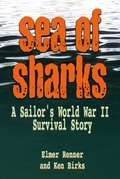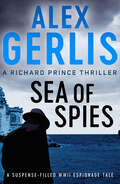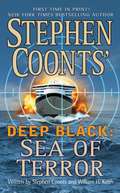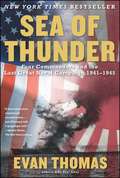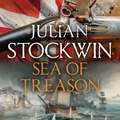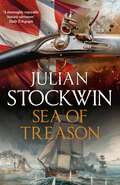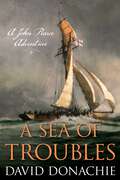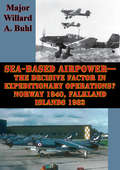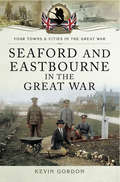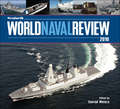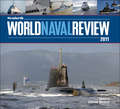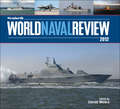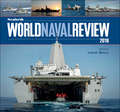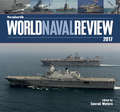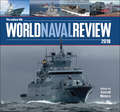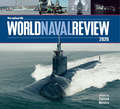- Table View
- List View
Sea of Gray: The Around-the-World Odyssey of the Confederate Raider Shenandoah
by Tom ChaffinAssembled from hundreds of original documents, including intimate shipboard journals kept by Shenandoah officers, Sea of Gray is a masterful narrative of men at seaThe sleek, 222-foot, black auxiliary steamer Sea King left London on October 8, 1864, ostensibly bound for Bombay. The subterfuge was ended off the shores of Madeira, where the ship was outfitted for war. The newly christened CSS Shenandoah then commenced the last, most quixotic sea story of the Civil War: the 58,000-mile, around-the-world cruise of the Confederacy's second most successful commerce raider. Before its voyage was over, thirty-two Union merchant and whaling ships and their cargoes would be destroyed. But it was only after ship and crew embarked on the last leg of their journey that the excursion took its most fearful turn.Four months after the Civil War was over, the Shenandoah's Captain Waddell finally learned he was, and had been, fighting without cause or state. In the eyes of the world, he had gone from being an enemy combatant to being a pirate—a hangable offense. Now fearing capture and mutiny, with supplies quickly dwindling, Waddell elected to camouflage the ship, circumnavigate the globe, and attempt to surrender on English soil."A superb account of how the Confederate raider Shenandoah brought the American Civil War to the farthest reaches of the world." -- Nathaniel Philbrick, author of Mayflower and Sea of Glory
Sea of Sharks
by Elmer Renner Ken BirksCaught off Okinawa in the fiercest typhoon in history at the end of World War II. Elmer Renner, then a young officer aboard a US minesweeper, recounts the horror of his ship sinking. Renner and eight other sailors clung to a small raft for days, battling thirst, hunger, shark attacks and, eventually, madness. Renner and co-author Ken Birks describe the men's panic as distant ships seemingly ignore their desperate calls, the sea turning blood red when one of the men loses his life to a shark, and how another slips silently away into the unforgiving Pacific.
Sea of Spies (Richard Prince Thrillers)
by Alex GerlisA nest of espionage. A break for the border. A race to survive.The Allies are desperate to stop neutral Turkey supplying vital materials to the Nazis – materials which could help them win the war. But then a British agent makes a fatal mistake, and disappears in Istanbul.In England, detective turned spy Richard Prince – back from a clandestine mission in Nazi-occupied Europe – is hunting for his lost son. Before long he is drawn into a dangerous follow-up operation, posing as a journalist in Turkey.The mission soon goes wrong. Out of touch with London and stranded hundreds of miles behind enemy lines, Prince will have to find evidence of the Turks secret trade with the Nazis, as well as a way out. Chances of survival? Low. Chance of completing his mission? Prince will do whatever it takes. An astounding WWII espionage thriller from a modern master of the genre, Sea of Spies is a triumph, perfect for fans of Alan Furst, John le Carré and Robert Harris.
Sea of Terror (Deep Black #8)
by Stephen Coonts William H. KeithTwo massive ships are on a dual path to destruction. One is a freighter carrying nuclear materials to Japan; the other, a cruise ship heading for the Mediterranean. Neither will reach their destinations. Two factions--Japanese eco-terrorists and Middle East extremists--have joined forces to infiltrate the ships, incapacitate the crew, and change course toward a common target: The United States of America. In Washington, Charlie Dean and a team of commandos are dispatched on a life-or-death mission to blow the hijackers plot out of the water. Their plan: board the ship unnoticed, pose as ordinary passengers, and overtake the terrorists. But time is running out. The seized ships are crossing the Atlantic with the combined strength of a full-scale nuclear torpedo and New York City is just on the horizon.
Sea of Terror (Executioner #303)
by Don PendletonPiracy is a big and bloody business in the South Pacific as cutthroats with speedboats and machine guns hit anything that floats. A vacationing American couple with connections in high places is being held for ransom-the latest in a long list of victims. "No compromise" is the official U.S. policy. Unofficially there's Mack Bolan. A KING'S RANSOM Facing tremendous odds and on unfamiliar turf, Bolan's mission is to find the couple and extricate them from captivity-if they are still alive. But first he has to reckon with the region's most notorious and brutal pirate, Sun Meong Lee. If the hostages are dead, Bolan will deliver the kind of blood justice the international courts are unwilling to dispense. For those who profit from death and suffering, the Executioner promises nothing less.
Sea of Thunder
by Evan ThomasEvan Thomas takes us inside the naval war of 1941-1945 in the South Pacific in a way that blends the best of military and cultural history and riveting narrative drama. He follows four men throughout: Admiral William ("Bull") Halsey, the macho, gallant, racist American fleet commander; Admiral Takeo Kurita, the Japanese battleship commander charged with making what was, in essence, a suicidal fleet attack against the American invasion of the Philippines; Admiral Matome Ugaki, a self-styled samurai who was the commander of all kamikazes and himself the last kamikaze of the war; and Commander Ernest Evans, a Cherokee Indian and Annapolis graduate who led his destroyer on the last great charge in the last great naval battle in history. Sea of Thunder climaxes with the Battle of Leyte Gulf, the biggest naval battle ever fought, over four bloody and harrowing days in October 1944. We see Halsey make an epic blunder just as he reaches for true glory; we see the Japanese navy literally sailing in circles, torn between the desire to die heroically and the exhausted, unacceptable realization that death is futile; we sail with Commander Evans and the men of the USS Johnston into the jaws of the Japanese fleet and exult and suffer with them as they torpedo a cruiser, bluff and confuse the enemy -- and then, their ship sunk, endure fifty horrific hours in shark-infested water. Thomas, a journalist and historian, traveled to Japan, where he interviewed veterans of the Imperial Japanese Navy who survived the Battle of Leyte Gulf and friends and family of the two Japanese admirals. From new documents and interviews, he was able to piece together and answer mysteries about the Battle of Leyte Gulf that have puzzled historians for decades. He writes with a knowing feel for the clash of cultures. Sea of Thunder is a taut, fast-paced, suspenseful narrative of the last great naval war, an important contribution to the history of the Second World War.
Sea of Thunder: Four Commanders and the Last Great Naval Campaign 1941-1945
by Evan ThomasEvan Thomas takes us inside the naval war of 1941-1945 in the South Pacific in a way that blends the best of military and cultural history and riveting narrative drama. He follows four men throughout: Admiral William ("Bull") Halsey, the macho, gallant, racist American fleet commander; Admiral Takeo Kurita, the Japanese battleship commander charged with making what was, in essence, a suicidal fleet attack against the American invasion of the Philippines; Admiral Matome Ugaki, a self-styled samurai who was the commander of all kamikazes and himself the last kamikaze of the war; and Commander Ernest Evans, a Cherokee Indian and Annapolis graduate who led his destroyer on the last great charge in the last great naval battle in history. Sea of Thunder climaxes with the Battle of Leyte Gulf, the biggest naval battle ever fought, over four bloody and harrowing days in October 1944. We see Halsey make an epic blunder just as he reaches for true glory; we see the Japanese navy literally sailing in circles, torn between the desire to die heroically and the exhausted, unacceptable realization that death is futile; we sail with Commander Evans and the men of the USS Johnston into the jaws of the Japanese fleet and exult and suffer with them as they torpedo a cruiser, bluff and confuse the enemy -- and then, their ship sunk, endure fifty horrific hours in shark-infested water. Thomas, a journalist and historian, traveled to Japan, where he interviewed veterans of the Imperial Japanese Navy who survived the Battle of Leyte Gulf and friends and family of the two Japanese admirals. From new documents and interviews, he was able to piece together and answer mysteries about the Battle of Leyte Gulf that have puzzled historians for decades. He writes with a knowing feel for the clash of cultures. Sea of Thunder is a taut, fast-paced, suspenseful narrative of the last great naval war, an important contribution to the history of the Second World War.
Sea of Treason: Thomas Kydd 26 (Thomas Kydd #53)
by Julian StockwinThe 26th Kydd adventure from veteran writer Julian Stockwin.Following his recovery after a savage wounding in America, Kydd returns to England to re-assume command of his ship-of-the-line, Thunderer, which is sent to the remote station of Bermuda.'Paints a vivid picture of life aboard the mighty ship-of-the-line' Daily Express(P)2023 Hodder & Stoughton Limited
Sea of Treason: Thomas Kydd 26 (Thomas Kydd #53)
by Julian StockwinFollowing his recovery after a savage wounding in America, Kydd returns to England to re-assume command of his ship-of-the-line, Thunderer, which is sent to the remote station of Bermuda.'Paints a vivid picture of life aboard the mighty ship-of-the-line' Daily Express
Sea of Treason: Thomas Kydd 26 (Thomas Kydd #53)
by Julian StockwinFollowing his recovery after a savage wounding in America, Kydd returns to England to re-assume command of his ship-of-the-line, Thunderer, which is sent to the remote station of Bermuda.'Paints a vivid picture of life aboard the mighty ship-of-the-line' Daily Express
Sea of Troubles: A John Pearce Adventure (John Pearce)
by David Donachie1794: In the wake of the Glorious First of June, Lieutenant John Pearce has pressing matters to attend to. He must undertake an urgent commission from Lord Hood, track down midshipman Toby Burns, and placate Emily Barclay. Meanwhile smugglers whose ship Pearce inadvertently stole are on his tail. And it is not only John Pearce who has his fair share of trouble. The triumphant Channel Fleet returns, but the battle is already the subject of controversy—and Ralph Barclay is accused of holding back from the action. Pearce turns the table on his enemies and sets off for the Mediterranean with Emily Barclay. He can only hope that his troubles will end along with his mission. But are they only just beginning?
Sea-Based Airpower—The Decisive Factor In Expeditionary Operations? Norway 1940, Falkland Islands 1982
by Major Willard A. BuhlThis essay examines the British use of sea-based aviation in support of two modern amphibious campaigns: the British campaign in Norway in 1940 and in the Falkland Islands War in 1982. The purpose is to determine whether or not aircraft carriers (sea-based aviation) were at the root of the success or failure of British efforts.In April 1940, there were no airfields in central Norway capable of supporting modern, high performance aircraft. As the Norwegian campaign unfolded and the British faced a significant land-based air threat from the Luftwaffe, they failed to appreciate the tactical and operational potential of sea-based aviation. At the same time, British naval aircraft were technically inferior in design and capability compared to their Luftwaffe land-based counterparts in 1940. Nevertheless, despite determined attacks on British naval assets at the tactical level, at the operational level, the German command limited their campaign goals and did not exploit their advantage in the air to the extent possible. Their actions did, however, place great pressure on British sea based lines of communication in central Norway, the operational pivot of the campaign.In 1982, against the Argentines, the British faced another opponent with superior land-based aviation. Although the British fully appreciated the need for air superiority, they employed a tactical scheme not unlike what had occurred in Norway. Nevertheless, the British were able to successfully contest the airspace above the Falklands and ultimately succeeded in defeating Argentine ground forces and ejecting them from the islands.
Seabees at Gulfport, The (Images of America)
by Capt. William Hilderbrand Gina L. NicholsIn June 1942, the U.S. Navy established an advance base depot in Gulfport because of its uncrowded deepwater port, rail access, open land, and a tepid climate that permitted training and open port facilities year-round. The base became the southern home for the Seabees and was ideal for shipping construction materiel and men to the Caribbean or the Pacific via the Panama Canal. Since the base reopened in March 1966, Seabees have deployed from Gulfport to serve during major conflicts as well as in peacetime. Seabees from Gulfport played an integral part in Operation Desert Shield/Desert Storm and more recently deployed to Afghanistan and Iraq to assist in local construction efforts to rebuild both countries. Seabees assist thousands each year in international humanitarian projects while still calling Gulfport home.
Seabees at Port Hueneme, The (Images of America)
by Gina NicholsIn 1942, the navy sought a location for an advance base on the West Coast to ship construction materiel, equipment, and men into World War II's Pacific theater. Port Hueneme's deepwater harbor, rail system, and rural setting made it the ideal site from which to send 20 million measurement tons of war materiel and a quarter of a million men onto island specks that later became headlines: Guadalcanal, Tarawa, Iwo Jima, Okinawa, and the Philippines. Seabees later deployed from Port Hueneme to serve in the Korean, Vietnam, Desert Shield/Desert Storm, and Iraqi conflicts, as well as in peacetime, for more than 60 years. Charged with building air bases, ports, combat camps, hospitals, and other support facilities as part of military and humanitarianefforts around the world, the Seabees remain at home in Port Hueneme.
Seaford and Eastbourne in the Great War (Your Towns & Cities in the Great War)
by Kevin GordonHow the experience of war impacted on the town, from the initial enthusiasm for sorting out the German kaiser in time for Christmas 1914, to the gradual realization of the enormity of human sacrifice the families of Seaforth and Eastbourne were committed to as the war stretched out over the next four years. A record of the growing disillusion of the people, their tragedies and hardships and a determination to see it through. The Sussex seaside towns of Seaford and Eastbourne were closer to the action than most places; the sound of naval battles could be heard from the coast (and sometimes witnessed by those with a good pair of binoculars). When the wind was in the right direction the rumble of artillery from France bought the frontline into the streets. At the start of the Great War, Eastbourne was an elegant and blossoming resort and did its best to maintain its tourist trade despite the arrival of soldiers, aeroplanes, refugees and the wounded. Seaford was a much smaller resort with a population of under 4,000 however thousands of troops from all over the Empire were billeted in the area either at private homes or in two massive camps. The Seaford camps were the venue for training, parades, fighting, murder and even rioting. Nearby Newhaven became an important port in which provisions were transported to the front. Conscientious Objectors, some under threat of the death penalty worked on the docks and the nearby roads. In his book Seaford and Eastbourne in the Great War local historian, Kevin Gordon tells the story of how the conflict affected, not only these seaside towns but also of the soldiers (many of them teenagers) who answered the call to battle. It is a story of spies, schoolchildren and sacrifice; a story that, for many, ended in the cemetery at Seaford which today is one of the largest Commonwealth War Graves in the South of England.
Seaforth World Naval Review 2010
by Conrad WatersThe World Naval Review is designed to fill the need for an authoritative but affordable summary of all that has happened in the naval world in the previous twelve months. It combines the standing features of regional surveys with one-off major articles on noteworthy new ships and other important developments. Besides the latest warship projects, it also looks at wider issues of importance to navies, such as aviation and electronics, and calls on expertise from around the globe to give a balanced picture of what is going on and to interpret its significance. Intended to make interesting reading as well as providing authoritative reference, there is a strong visual emphasis, including specially commissioned drawings and the most recently released photographs and artists' impressions.For anyone with an interest in contemporary naval affairs, whether an enthusiast or a defence professional, this annual is set to become required reading.
Seaforth World Naval Review 2011: 2011
by Conrad WatersLaunched in 2009, this annual is rapidly establishing a reputation as an authoritative but affordable summary of all that has happened in the naval world in the previous twelve months. It combines the standing features of regional surveys with one-off major articles on noteworthy new ships and other important developments. Besides the latest warship projects, it also looks at wider issues of importance to navies, such as aviation and electronics, and calls on expertise from around the globe to give a balanced picture of what is going on and to interpret its significance. This year special features include in-depth studies of the growing naval power of Turkey and South Korea, plus analyses of four significant new warship classes: the RN's Astute class nuclear attack submarines; India's Project 15 destroyers; the Norwegian Fridtjof Nansen, the smallest warship to carry the Aegis weapon system; and USS Independence, an innovative littoral combat ship designs.Intended to make interesting reading as well as providing authoritative reference, there is a strong visual emphasis, including specially commissioned drawings and the most recently released photographs and artists' impressions.For anyone with an interest in contemporary naval affairs, whether an enthusiast or a defence professional, this annual is set to become required reading.
Seaforth World Naval Review 2012
by Conrad WatersLaunched in 2009, this annual has rapidly established a reputation as an authoritative but affordable summary of all that has happened in the naval world in the previous twelve months. It combines the standing features of regional surveys with one-off major articles on noteworthy new ships and other important developments. Besides the latest warship projects, it also looks at wider issues of importance to navies, such as aviation and electronics, and calls on expertise from around the globe to give a balanced picture of what is going on and to interpret its significance. This year special features include in-depth studies of the navies of Brazil, Australia and Pakistan, plus analyses of three significant new warship classes: the USNs advanced amphibious warfare ship Makin Island (LHD-8): Swedens futuristic Visby class stealth corvettes; and the BAE Systems offshore patrol vessels.Intended to make interesting reading as well as providing authoritative reference, there is a strong visual emphasis, including specially commissioned drawings and the most recently released photographs and artists impressions. For anyone with an interest in contemporary naval affairs, whether an enthusiast or a defense professional, this annual has become required readin
Seaforth World Naval Review 2013
by Conrad Waters&“The 2013 edition . . . includes four articles on significant ships, respectively; French Navy, US Coast Guard, German Navy and Indian Navy.&”—Firetrench Reviews Launched in 2009, this annual has rapidly established a reputation as an authoritative but affordable summary of all that has happened in the naval world in the previous twelve months. It combines the standing features of regional surveys with one-off major articles on noteworthy new ships and other important developments. Besides the latest warship projects, it also looks at wider issues of importance to navies, such as aviation and electronics, and calls on expertise from around the globe to give a balanced picture of what is going on and to interpret its significance. Special features for the 2013 edition include in-depth studies of the navies of Italy and Ireland, plus analyses of significant new warship classes: the French Aquitaine class frigates, Indian Shivalik class Project 17 frigates, German Braunschweig class corvettes, and US Bertholf class national security cutters. Intended to make interesting reading as well as providing authoritative reference, there is a strong visual emphasis, including specially commissioned drawings and the most recently released photographs and artists&’ impressions. This annual has become &“a must for those wishing to keep up with world naval affairs&” (Scuttlebutt).
Seaforth World Naval Review 2015: 2015
by Conrad WatersThe &“profusely illustrated&” yearly military reference that features world fleet reviews, significant ship developments, and technological advancements (Ships Monthly). Now in its seventh year, this annual has established an international reputation as an authoritative but affordable summary of all that has happened in the naval world in the previous twelve months. It combines regional surveys with one-off major articles on noteworthy new ships and other important developments. Besides the latest warship projects, it also looks at wider issues of importance to navies, such as aviation and electronics, and calls on expertise from around the globe to give a balanced picture of what is going on and to interpret its significance. The 2015 edition looks in detail at the French Navy and the Bangladesh and Myanmar navies, while significant ships include the Montford Point class mobile landing platforms, the Samuel Beckett offshore patrol vessels, and the Skjold class fast attack craft. There are technological reviews dealing with naval aviation by David Hobbs, and current mine warfare developments by Norman Friedman, while warship recycling is discussed by Ian Buxton. Intended to make interesting reading as well as providing authoritative reference, there is a strong visual emphasis, including specially commissioned drawings and the most up-to-date photographs and artists&’ impressions. For anyone with an interest in contemporary naval affairs, whether an enthusiast or a defense professional, this annual has become required reading.
Seaforth World Naval Review 2016
by Conrad Waters&“The crème de la crème of naval writers . . . an extremely detailed overview of the last year in naval policy, construction and deployment.&”—Warship World This annual has an established reputation as an authoritative but affordable summary of all that has happened in the naval world in the previous twelve months. It combines regional surveys with one-off major articles on noteworthy new ships and other important developments. Besides the latest warship projects, it also looks at wider issues of importance to navies, such as aviation and electronics, and calls on expertise from around the globe to give a balanced picture of what is going on and to interpret its significance. This edition looks in detail at the Royal Navy as it faces the latest defense review, and evaluates the Indonesian Navy, while significant ships will include the USN&’s San Antonio class amphibious transports, the new Dutch OPVs, the Turkish Milgem class corvettes and the Greek Roussen class fast attack craft. There are also technological reviews dealing with naval aviation by David Hobbs, focusing on maritime patrol aircraft, while Norman Friedman surveys recent electronic warfare developments. Intended to make interesting reading as well as providing authoritative reference, there is a strong visual emphasis, including specially commissioned drawings and the most up-to-date photographs and artists&’ impressions. For anyone with an interest in contemporary naval affairs, whether an enthusiast or a defense professional, this annual has become required reading. &“A high-quality, deeply-researched and handsomely-illustrated book.&”—Army Rumour Service
Seaforth World Naval Review 2017
by Conrad Waters&“This fascinating book examines trends in maritime strategy and geopolitics . . . including technological advances and significant new ships.&”—Nautilus Telegraph This annual has an established reputation as an authoritative but affordable summary of all that has happened in the naval world in the previous twelve months. It combines regional surveys with one-off major articles on noteworthy new ships and other important developments. Besides the latest warship projects, it also looks at wider issues of importance to navies, such as aviation and electronics, and calls on expertise from around the globe to give a balanced picture of what is going on and to interpret its significance. Features of this edition include an in-depth analysis of the Royal Netherlands Navy, while Significant Ships will cover the USN&’s radical new Zumwalt class destroyers, the Republic of Korea&’s amphibious assault ship Dokdo, and the JMSDF&’s Akizuki class destroyers, among others. There are also technological reviews dealing with naval aviation by David Hobbs (with a focus on the present state of the RN&’s Fleet Air Arm), while Norman Friedman surveys naval surface-to-surface missiles. The World Naval Review is intended to make interesting reading as well as providing authoritative reference, so there is a strong visual emphasis, including specially commissioned drawings and the most up-to-date photographs and artists&’ impressions. For anyone with an interest in contemporary naval affairs, whether an enthusiast or a defense professional, this annual has become required reading. &“An extraordinarily useful annual from the point of view of a comprehensive update on the world&’s navies . . . a key resource for keeping up, whether in cabin or armchair.&”—Seaweed
Seaforth World Naval Review 2018: 2018
by Conrad WatersThe yearly military reference that&’s &“a well written, easy to read and well illustrated discussion of current naval power world-wide&”—Thomo&’s Hole. Now firmly established as an authoritative but affordable summary of all that has happened in the naval world in the previous twelve months, this annual combines regional surveys with one-off major articles on noteworthy new ships and other important developments. Besides the latest warship projects, it also looks at wider issues of importance to navies, such as aviation and weaponry, and calls on expertise from around the globe to give a balanced picture of what is going on and to interpret its significance. Features of this edition include an analysis of the Republic of Korea Navy and the response to its aggressive northern neighbor. Significant Ships will cover the USN&’s revamped Arleigh Burke class destroyer design, German F125 class frigates, and the RNZN&’s Otago class offshore patrol vessels. There are also technological reviews dealing with naval aviation by David Hobbs, RN missile programs by Richard Scott, while Norman Friedman turns his attention to new generation weapons technology. The World Naval Review is intended to make interesting reading as well as providing authoritative reference, so there is a strong visual emphasis, including specially commissioned drawings and the most up-to-date photographs and artists&’ impressions. For anyone with an interest in contemporary naval affairs, whether an enthusiast or a defense professional, this annual has become required reading.
Seaforth World Naval Review 2020
by Conrad WatersThis anthology features in-depth assessments of naval innovations and developments around the word by leading experts in the field. The Seaforth World Naval Review 2020 provides an authoritative summary of cutting-edge naval developments across the globe. Regional surveys of fleet evolution and procurement by editor Conrad Waters are supplemented by in-depth articles from a range of experts focusing on significant new warships, technological advances and specific navies. This volume features coverage of the US Navy&’s Virginia class submarines, the Royal Navy&’s Tide class tankers and the Indian P28 Komorto class corvettes. Recent developments in submarine technology are analyzed by Norman Friedman, while David Hobbs&’ usual review of naval aviation focusses on the F35 Lightning II. In-depth fleet reviews look at Finland and Germany and analyze how they are responding to the increased Russian threat. Now firmly established as providing the only annual naval overview of its type, The Seaforth World Naval Review is essential reading for anyone interested in contemporary maritime affairs.
Seaforth World Naval Review 2020
by Conrad WatersThis anthology features in-depth assessments of naval innovations and developments around the word by leading experts in the field. The Seaforth World Naval Review 2020 provides an authoritative summary of cutting-edge naval developments across the globe. Regional surveys of fleet evolution and procurement by editor Conrad Waters are supplemented by in-depth articles from a range of experts focusing on significant new warships, technological advances and specific navies. This volume features coverage of the US Navy&’s Virginia class submarines, the Royal Navy&’s Tide class tankers and the Indian P28 Komorto class corvettes. Recent developments in submarine technology are analyzed by Norman Friedman, while David Hobbs&’ usual review of naval aviation focusses on the F35 Lightning II. In-depth fleet reviews look at Finland and Germany and analyze how they are responding to the increased Russian threat. Now firmly established as providing the only annual naval overview of its type, The Seaforth World Naval Review is essential reading for anyone interested in contemporary maritime affairs.

